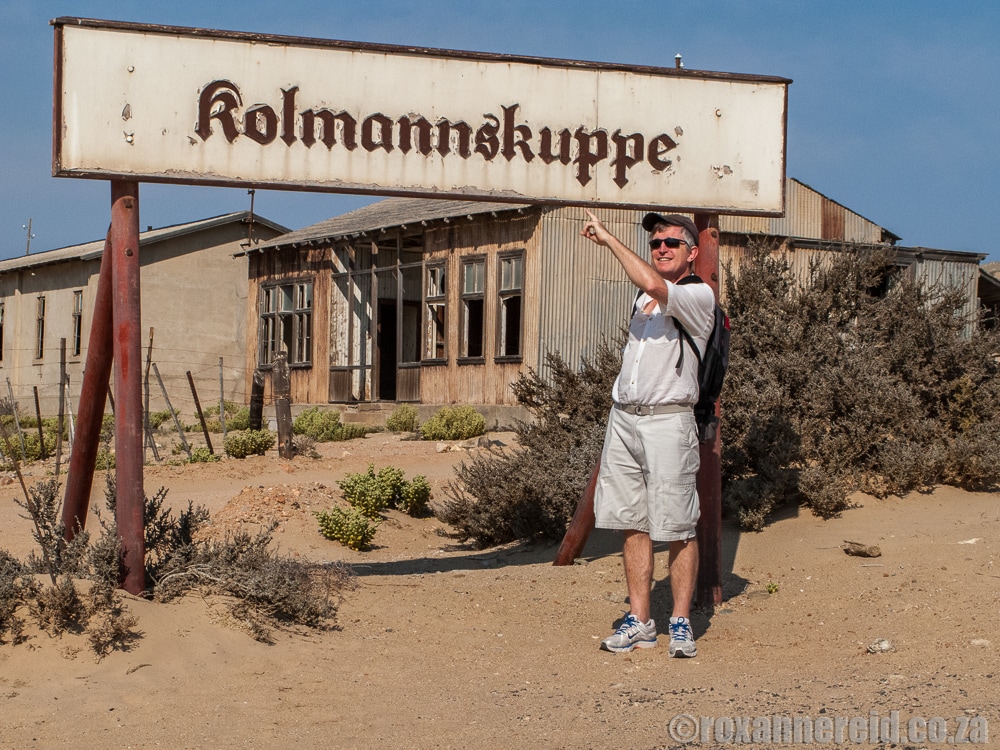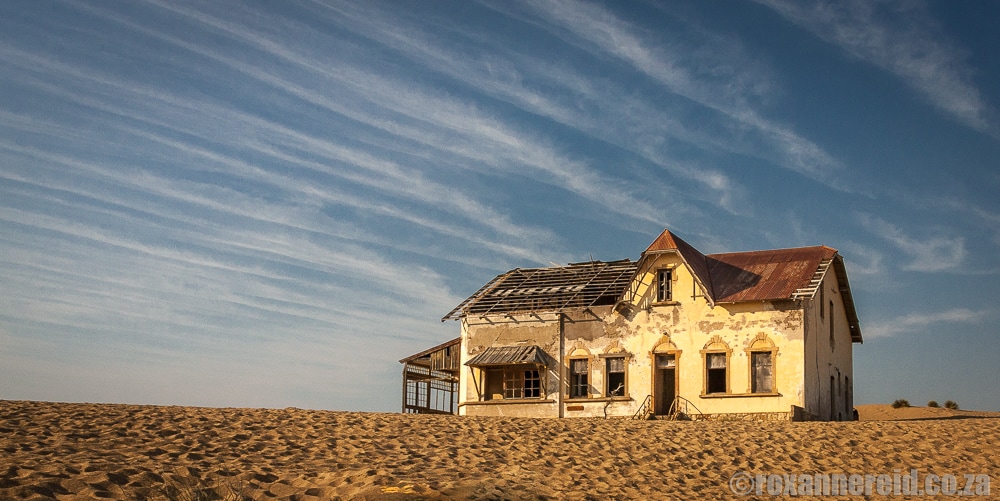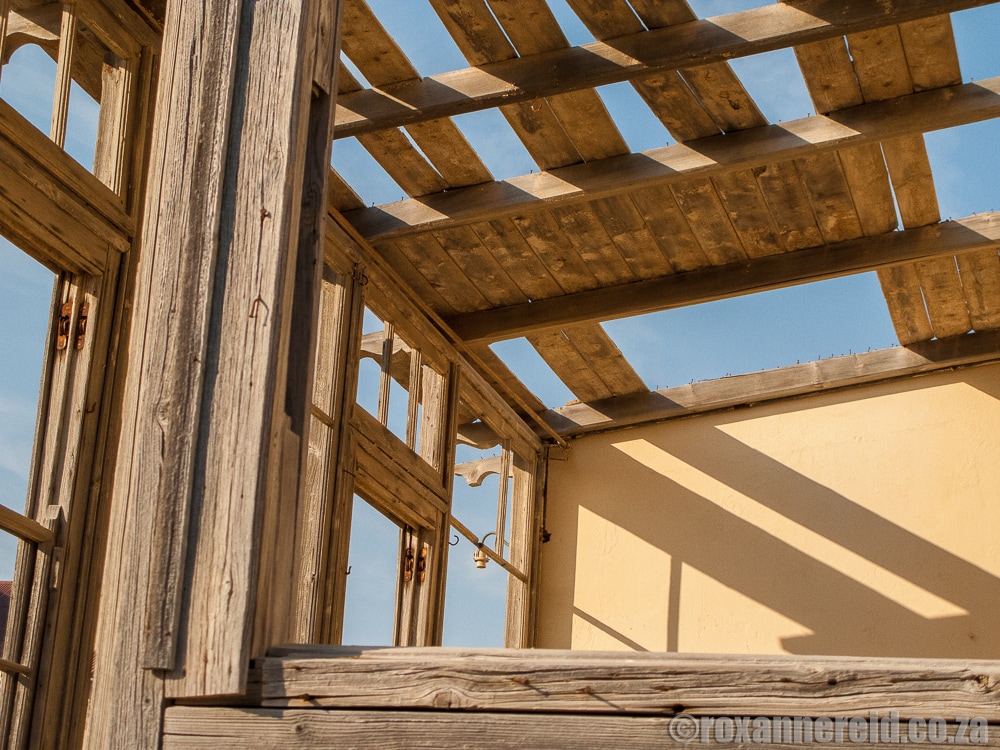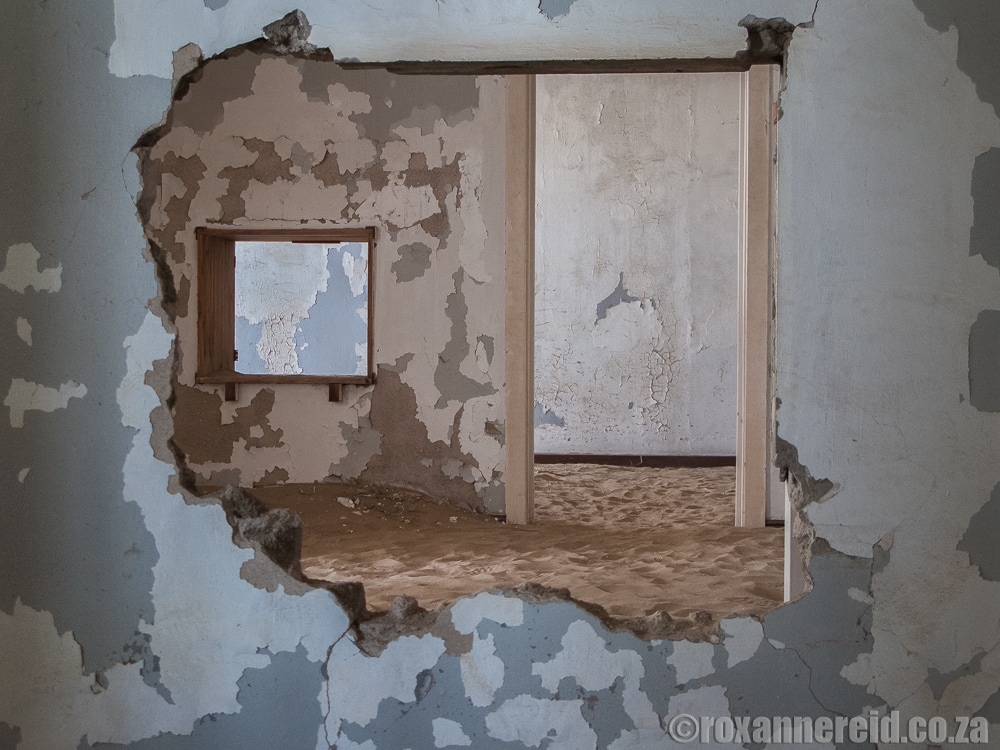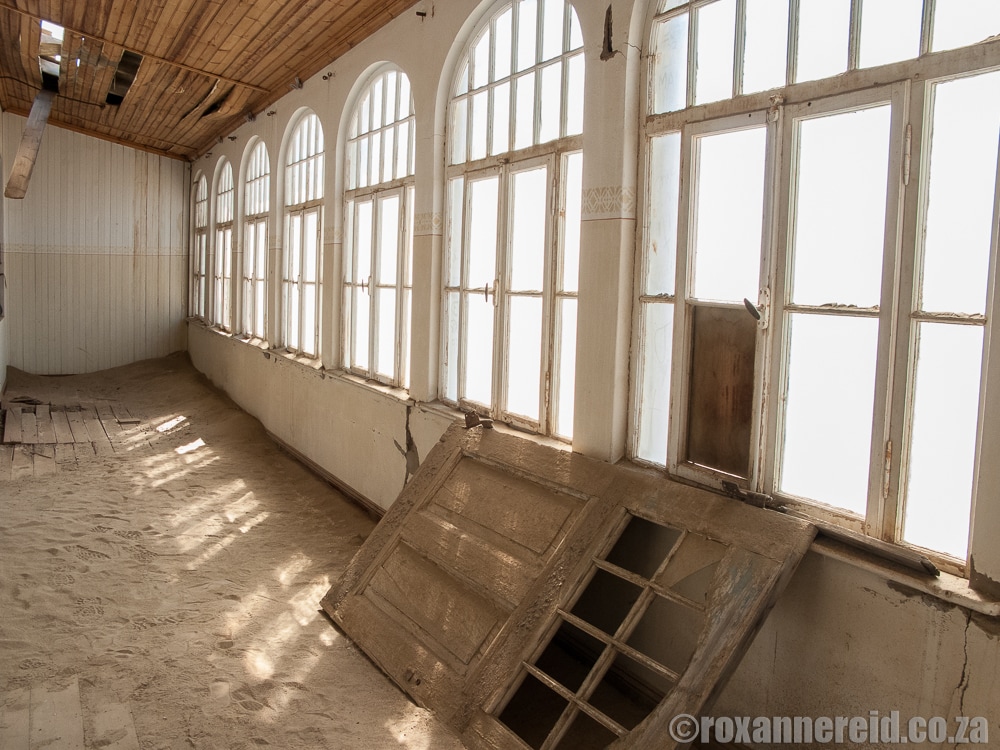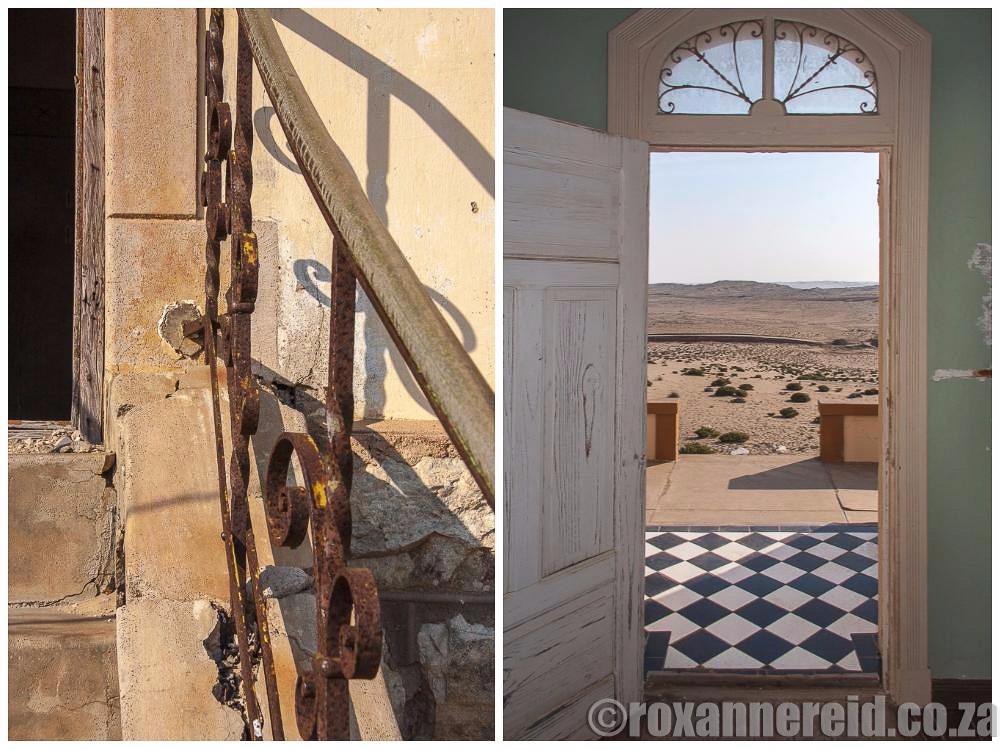
By Roxanne Reid
Diamonds so plentiful you could pluck them by the fistful off the open ground. And then they were gone. People lived and worked here, but the wind and sand have swept them away too. This is Kolmanskop, Namibia’s ghost town.
Diamonds so plentiful you could pluck them by the fistful off the open ground. And then they were gone. People lived and worked here, but the wind and sand have swept them away too. This is Kolmanskop, Namibia’s ghost town.
It’s a bleak windswept patch on the edge of the Namib Desert in south-western Namibia, some 10km inland from Lüderitz. It was once a grand town where 1300 people lived, some of them so wealthy they could afford to make their life in this isolated place more bearable by importing any European luxury they wanted.
Now just the bones of some of the buildings remain, haunted by wind and sand that threaten to reduce them to nothing.
Now just the bones of some of the buildings remain, haunted by wind and sand that threaten to reduce them to nothing.
The little settlement was named after Johnny Kolman, who transported goods between Lüderitz and Aus to the east. One day in 1905 his wagon got stuck in the thick sand and he was caught in a sandstorm for two days before someone rescued him. His oxen had run away so he abandoned his wagon near a hill (kuppe/kop). It became a bit of a landmark, so the place became known by his name – Kolmannskuppe in German or Kolmanskop in Afrikaans.
When we visited more than 100 years later, there wasn’t another soul around at first so we immersed ourselves in the eerie atmosphere and took photos in the early morning light. Although Kolmanskop is famous as a ghost town, for me it was more a peculiar marriage of Wild West frontier atmosphere with 19th century Germanic architecture.
A few hardy tussocks of grass and scrawny bushes dot the landscape, but desert sand dominates everything. Over time the movement of the sand uncovers one thing and buries another, even swallows up whole rooms of houses, while the winds pitch a bath tub on to a dune or rip away roofing to let the sun filter in.
Diamonds boom and bust
Kolmanskop’s story started in spring 1908 when Zacharias Lewala, a railway worker on the line between Lüderitz and Keetmanshoop, picked up a shiny stone and showed it to his boss, August Stauch.
A story tells how the sneaky Stauch first bought up pockets of land in the area and only then told the German government diamonds had been discovered. He became a millionaire overnight but, as was the way back then, nothing much changed for Zacharias Lewala.
Kolmanskop’s story started in spring 1908 when Zacharias Lewala, a railway worker on the line between Lüderitz and Keetmanshoop, picked up a shiny stone and showed it to his boss, August Stauch.
A story tells how the sneaky Stauch first bought up pockets of land in the area and only then told the German government diamonds had been discovered. He became a millionaire overnight but, as was the way back then, nothing much changed for Zacharias Lewala.
The area around Kolmanskop produced a million carats in 1912. At the time that was nearly 12% of the whole world’s diamond production. Because of Kolmanskop’s low population numbers it was – if only for a very short time – the town with the highest per capita wealth in the world.
Our guide Netley Beukes told us that by 1914, five million carats – that’s a staggering ton of diamonds – had been found here. ‘People used to just lie on their tummies and pick them up off the ground with tweezers. The diamond workers’ mouths were usually gagged against the wind but also so they couldn’t slip a few in,’ she said.
A person could find an average of 400 to 500 carats of diamonds a day. They weren’t big – about the size of a match head – but they certainly were plentiful.
Our guide Netley Beukes told us that by 1914, five million carats – that’s a staggering ton of diamonds – had been found here. ‘People used to just lie on their tummies and pick them up off the ground with tweezers. The diamond workers’ mouths were usually gagged against the wind but also so they couldn’t slip a few in,’ she said.
A person could find an average of 400 to 500 carats of diamonds a day. They weren’t big – about the size of a match head – but they certainly were plentiful.
At the height of the diamond boom 1300 people lived at Kolmanskop, including about 300 German adults and their 40 kids. The rest were locals who who did most of the hard work and lived in a long building set slightly apart from the town. ‘They came for a two-year contract,’ said Netley. ‘A week before they were due to leave they would be quarantined, fed castor oil and their systems flushed in case they’d swallowed a few diamonds.’
Naturally creative, the workers soon hatched a cunning plan: they would shave their heads months before the end of their contracts, make small incisions in the scalp with a blade and ‘post’ match-head size diamonds into them. The incisions would heal and the men’s hair would grow to cover the scene of the crime. When they got back to Owamboland they simply shaved the head again, reopened the cuts and hey presto, instant wealth.
The installation at Kolmanskop of the first x-ray machine in southern Africa put a stop to all that.
Naturally creative, the workers soon hatched a cunning plan: they would shave their heads months before the end of their contracts, make small incisions in the scalp with a blade and ‘post’ match-head size diamonds into them. The incisions would heal and the men’s hair would grow to cover the scene of the crime. When they got back to Owamboland they simply shaved the head again, reopened the cuts and hey presto, instant wealth.
The installation at Kolmanskop of the first x-ray machine in southern Africa put a stop to all that.
Then in 1927 diamonds were discovered along the Orange River. These were much more exciting – six times bigger, or golf ball size. By 1936 not much was happening at Kolmanskop’s diamond mines and within 20 years the last families had moved away. No one came to sweep the sand off the streets, the baker stopped delivering bread and the ice factory fell silent. Slowly swallowed by sand, Kolmanskop became a ghost town.
After that, Netley told us, people used to come to the abandoned town to ‘shop’ for building materials for their houses in Lüderitz a few kilometres away. An awful lot of looting went on so not all the missing beams and roofing can be blamed on the desert. Some precious items grew legs and hiked to new homes in Lüderitz too. ‘One man who came on a tour confessed he’d taken a lamp 13 years earlier and now wanted to return it,’ she said.
Today this ghost town in the far southwest of Namibia is popular with photographers who find its ruins sad but soulful and flock to see the crumbling buildings that were once so fine. There may not be real ghosts, but it's a haunting place that will touch your heart.
Did you enjoy the article? Pin this image!
Today this ghost town in the far southwest of Namibia is popular with photographers who find its ruins sad but soulful and flock to see the crumbling buildings that were once so fine. There may not be real ghosts, but it's a haunting place that will touch your heart.
Did you enjoy the article? Pin this image!
You may also enjoy
Desert horse campsite and Namibia's wild horses
Soar in a hot air balloon over Sossusvlei in Namibia
Copyright © Roxanne Reid - No words or photographs on this site may be used without permission from roxannereid.co.za
Desert horse campsite and Namibia's wild horses
Soar in a hot air balloon over Sossusvlei in Namibia
Copyright © Roxanne Reid - No words or photographs on this site may be used without permission from roxannereid.co.za
